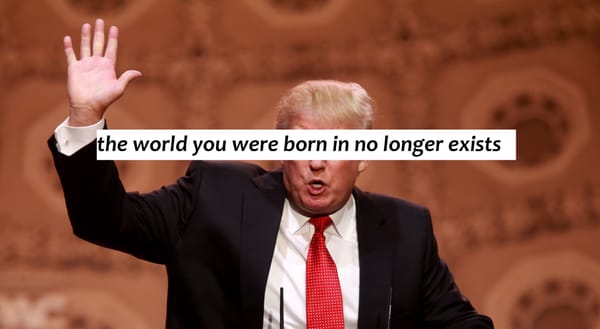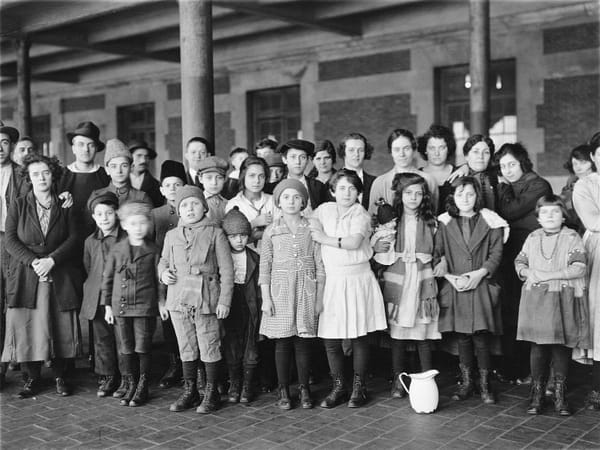Driving, Police Power, and the Word: Sarah A. Seo's Policing the Open Road

The roadside police encounter gone wrong was a familiar genre in American media before audiences more recently began to develop a larger appetite for police misconduct stories. Is this merely a special case of a now general, nihilistic tendency in which “government failure now sets the agenda”? That is undeniably a key part of recent interest, but as Sarah A. Seo documents in Policing the Open Road, public concern over the relationship between the police and drivers goes back right to the beginning of mass automobility. When a police officer observes a car going over the speed limit, or driving away from the scene of a robbery, they do not have time to go and get a warrant. When they do pull someone over, the driver may be armed or become otherwise violent. Our legal system has ultimately taken these factors into consideration by giving police wide latitude in determining when it is reasonable to pull a driver over, search their vehicle, and by rationalizing most police violence as preemptive self-defense.
While changes in media and technology make it easier than ever to document and share specific instances of police violence, the fundamental situation we have created in this country makes police violence of the headline-catching sort all but inevitable. A civilized society ought not to subject even its criminals to the arbitrary discretion of individuals who can turn violent without repercussion, but the main theme of Seo’s book is the way in which policing cars created unprecedented contact between law enforcement and respectable, otherwise law-abiding citizens. The “Everyman,” an implicitly (and sometimes not-so-implicitly) middle class white man, became a much-discussed object of concern among police leadership and in Fourth Amendment jurisprudence. How can our safety and rights be guaranteed when huge proportions of the citizenry—even the high status “Everyman”—are likely to find themselves under the broad discretion of armed policemen?
Seo does not offer cause for optimism. As local governments expanded the scope of their policing in response to the real public dangers posed by mass automobility, and legislators churned out a mass of reactive, contradictory rules of the road, judges tried to issue rulings which made sense of it all. To constrain the reality on the ground with the written word of law, in some way. With notable but rare exceptions, they failed. The basic on the ground reality of on-the-spot police discretion were established long before the courts made peace with it, and making peace with it is by and large all they managed to do.
A failure of self-governance
However, the courts, the legislators, and even the police do not bear the sole responsibility for the situation in which we now find ourselves. It came about in response to the very real problems that arose from the mass adoption of the car. One especially significant and under-discussed consequence was the demise of the 19th century model of community self-governance. In contrast to the present, in the 19th century:
Even in the cities, the flow of movement on streets and highways was largely self-regulated, and traffic laws appeared mainly in collision cases between private parties who argued over whether an alleged violation demonstrated negligence.
Self-regulation also relied in large part upon membership in voluntary organizations which engaged in norm enforcement:
In the nineteenth century, self-governing associations like churches, trade unions, clubs, and fraternities maintained social order by instilling civic spirit and setting forth the rights and duties of their members. When people could not resolve disputes among themselves—and all disputes could be boiled down to disagreements about rights and duties owed to each other—judges and juries decided how the common law would govern the situation. When someone breached a social or legal norm, the aggrieved person brought the offender before a justice of the peace to settle the matter. Through this “judicial patriarchy,” lives were well regulated and disciplined. Both associational and common-law governance were local in scale, and proximity and regular contact among members and neighbors made accountability possible and effective.
Cars spelled the demise of this arrangement for a number of reasons, chiefly the surge in mobility that came in its wake, and the resulting weakening of local associations and local courts.
Libertarians and small government conservatives are frequently criticized, not always fairly, for failing to see the need for the public provision and maintenance of roads. But the true problem that cars pose for these ideologies is the way people behave in them in practice. To this day, a century after Seo’s tale begins, the typical driver drives as fast as they believe they can get away with, looks for cars but not pedestrians when making a turn, and is just generally lawless and reckless until confronted with the police. Self-governance on the road has failed and continues to fail.
And so, where governance by norm-enforcing associations and local common law courts were unable to meet this new challenge, the traffic cop was born.
Containing police power with words
The Fourth Amendment holds that:
The right of the people to be secure in their persons, houses, papers, and effects, against unreasonable searches and seizures, shall not be violated, and no warrants shall issue, but upon probable cause, supported by oath or affirmation, and particularly describing the place to be searched, and the persons or things to be seized.
In the 1925 Carroll v. United States, two bootleggers were caught with alcohol hidden in their car. It may surprise a contemporary reader, but not only did the defense argue that merely stopping the defendants’ car constituted a seizure—which would require a warrant—but the prosecution did not dispute that this was true according to established precedent.
Instead, and more astonishingly, the solicitor general urged the Supreme Court to uphold the convictions by revising the centuries-old law of arrests. The “use of such motor vehicles by criminals…demands that our ancient law be so amended as to cope with these modern facilities,” Beck pleaded. He argued that a lower standard than even probable cause was necessary when cars were involved.
The court upheld the convictions, but worried about allowing “a prohibition agent were authorized to stop every automobile on the chance of finding liquor, and thus subject all persons lawfully using the highways to the inconvenience and indignity of such a search.” They therefore insisted that “where the securing of a warrant is reasonably practicable, it must be used.” But this, of course, was precisely a lower standard of the sort the prosecution had asked for.
Critics of the Warren Court frequently accuse it of deviating from either the text of the Constitution or the spirit of existing precedent, but it was policemen, prosecutors, and (by and large) lower courts who blew up the scope of Fourth Amendment protections. The Warren Court simply attempted to pick up the pieces, by providing a few procedural safeguards. In Mapp v Ohio, they held that the exclusionary rule (the existence of which seems a fixture to any audience who grew up watching Law and Order) applied to the states, not just the federal government. Two years after this ruling, New York City went from issuing a negligible amount of warrants per year, to over 5,000 per year. This was a rare case where courts had a palpable effect and put a layer of judicial oversight between citizens and the police—though Seo notes with disdain the tendency of judges to “rubber stamp” warrants.
Other famous cases—such as Gideon v. Wainwright, which established the right to a lawyer, and Miranda. v. Arizona, which applied the exclusionary rule to statements made without notice of that right as well as the right against self-incrimination—were important and certainly impacted how policing was conducted, but did not change its basic nature. Pulling over a car does not require a warrant under current law, and so drivers remain subject to the on-the-spot domination of policemen. The Due Process Revolution, as it came to be known, deals with what evidence will be allowed to be used against you in court, but by and large does not alter this fundamental relationship between citizens and police that was established in the wake of mass adoption of the car.
A way forward
Seo offers little in the way of a path forward, except for the vague observation that “one era’s answers may not be sufficient to solve another generations problems,” but hers is not a work of activism; it is a history. We still wrestle with both “one era’s answers” to their problems and, by and large, the very same problems. Seo’s book is an excellent guide to understanding each in turn.
While there is little to be gained by lingering too long to condemn the police, prosecutors, and judges of the past for the “answers” they handed down to us, neither must we accept their failure to imagine other possibilities. Personally, if I were to single out any party for condemnation, it would be legislators, who by and large fell down on the job in this story, ceding responsibility to the cops on the road and the judges in the courts. Part of the problem is in the nature of our government—I leave it to Constitutional Scholars and other metaphysicians to determine whether a federal law governing how states use their policing power is Constitutional, but it clearly at odds with our constitutional practice. Were it an option, one way to address the problem of arbitrary police discretion would be to devise a federal law constraining the number of scenarios in which citizens come into contact with police. We also have options they did not; we could replace a lot of routine road policing with speed cameras—something that encounters a lot of local resistance that might not be as effectively mobilized at the national level.
More to the point, Seo’s book purposely offers a reappraisal of the now century-long American project of building our cities and our lives around the automobile. To resist that project’s reach in our new developments, to say nothing of reversing its accomplishments to date, will take much more than a single statute or precedent. But Policing the Open Road is a good place to start if one wishes to understand the stakes.
Featured image is a Ford Model T




